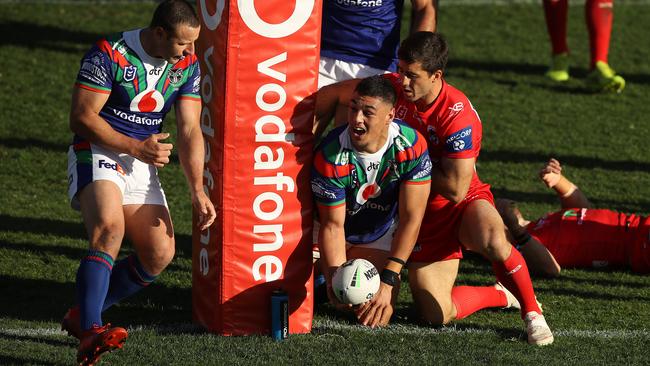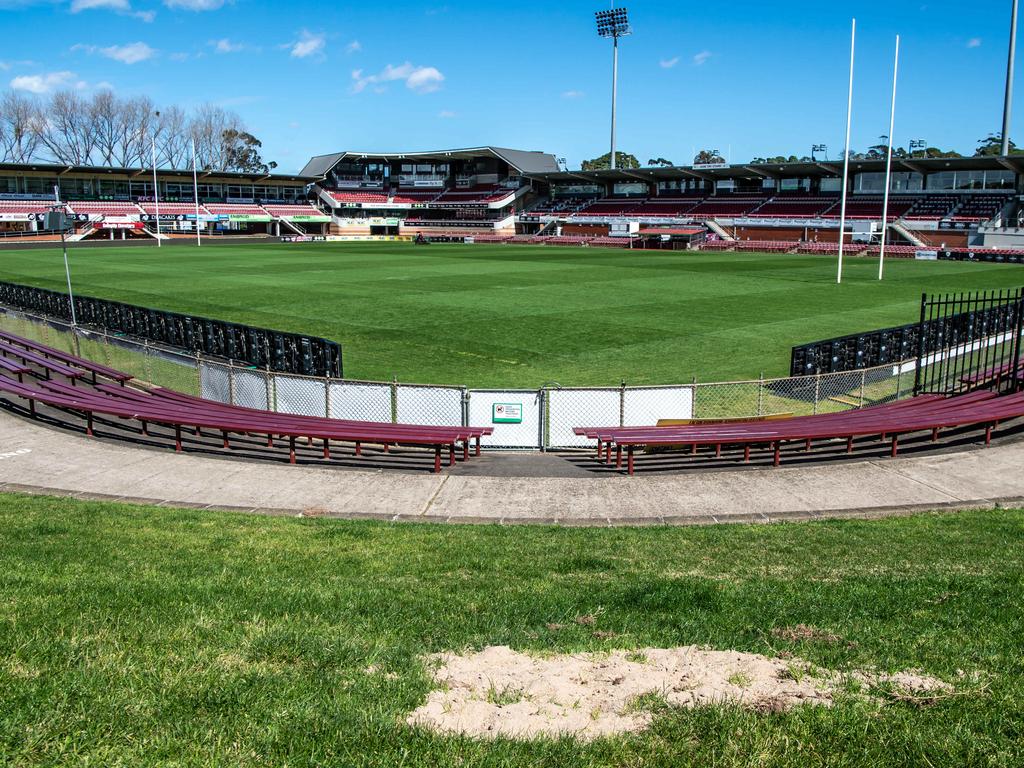Proof rule changes have made NRL faster, cleaner, better
The stats confirm rugby league’s return was faster, more fluent and cleaner than it was before lockdown.

It was only one round but the bare statistics confirmed what the eye — and there were millions of them — had seen. Rugby league’s return was faster, more fluent and cleaner than the two rounds that took place before the season went into hibernation due to COVID-19 back in March.
There was more ball in play, more active seconds and more line breaks. Penalties were significantly down, as were penalty goals.
There were 53 six-again calls made by the referees and tries directly followed 10 of them. This was everything the NRL had hoped for and more.
It was only a small sample size — eight games in total — but it made for encouraging reading for ARL Commission chair Peter V’landys and NRL head of football Graham Annesley, who had led the charge in changing the rules.
Annesley fronted his first briefing since the game resumed at Rugby League Central on Monday and looked like the cat who had swallowed the canary.
He was smart enough to concede the coaches would already be plotting ways to navigate around the new rules, no doubt emboldened by having access to footage from Round 3 when the players did their best to accommodate the changes.
However, Annesley and the NRL are intent on staying one step ahead of the coaches to ensure the rules continue to have the desired effect.
“I am not being critical of coaches,” Annesley said.
“Their job is to win. They will always look at how they can work within or around the edges of the rules to try to give their team a benefit.
“The most obvious area where I guess they could try to have an impact on the six-again rule and the continuity of the game is by infringing in the 10 metres, by infringing in the marker area.
“The 10 metres will come under more and more pressure as teams attempt to shut down opposition attacks. The referees are alert to that. If clubs want to roll the dice on that, they do it at their own peril.”
The ability of players to quickly adapt themselves to changing circumstances was arguably highlighted by a different statistic presented by Annesley.
Having been successful with only 26 per cent of their captain’s challenges before the COVID-19 shutdown, the skippers nailed it on 45 per cent of occasions over the weekend.
Perhaps it was an indication that they had grasped the intricacies of another rule that caused consternation before the season began.
There seems little doubt they will get a handle on the six-again rule in coming weeks, heaping pressure on the NRL and referees to hold their nerve.
“It is probably what we were hoping for rather than expecting,” Annesley said.
“When you make these sort of changes that are largely untested in the hurly-burly of competitive football … you never really know what you are going to get.
“But the intention of the change was to try to take the referee out of the play, to try to make sure that we get more football, to try to make it more entertaining and attractive to watch.
“So I think some of these stats are certainly encouraging. We do want to see how they pan out in coming weeks. I am sure the coaches are going to be planning how they intend to adapt to the changes as well. They had it thrown on them at the last minute as well.
“So there wasn’t a lot of time to prepare. But if what we saw over the weekend is any indication, then the general view across most people in the community that I spoke to, most commentators … everyone seemed to think the game was a better spectacle.
“There were certainly less stoppages. I guess importantly the referees weren’t as much the focus as they were in the past.
“We did see a continuation of play that meant we weren’t dwelling on decisions that each referee was making.
“The introduction of the six-again allows the game to move and keep going. If we just look at the intention of the rule changes, what we are trying to achieve, what we are trying to do to make the game more enjoyable to play and watch, you would have to say round three was a success.
“Coaches wouldn’t be coaches if they weren’t strategising about how they deal with these things. They will be coming up with different ways to try to counter them.
“We have to stay ahead of that.”






To join the conversation, please log in. Don't have an account? Register
Join the conversation, you are commenting as Logout